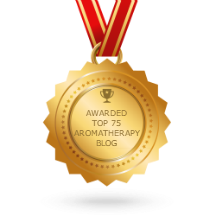Another guest blog as Sandy experiences the CO2 extracts I love.
One of the big topics during our week in
Atlanta centered on CO2s, and as a result, Nature’s Gift has sourced even more
varieties of these intriguing oils.
Madeleine Kerkhof-Knapp Hayes discusses CO2s in her book,
Complementary Nursing in End of Life Care
(a misnomer, by the way, as this book is filled with information beyond end
of life care!).
Kerkhof explains that CO2s are from a method of essence extraction that
is only recently catching attention. In
this method, carbon dioxide is pumped through the plant material until it
reaches the super critical phase, at which time it begins to act as an organic
solvent. Using high pressure and low
temperature, the constituents are extracted. Upon completion of extraction, the pressure is
reduced so that the CO2 is released and the lipophilic plant constituents (those
that tend to dissolve in fats) are obtained in their original state. (1)
This form of
extraction usually results in two extraction types:
Select – Using
low pressure, the extract contains only volatile CO2 soluble components and has
a richer composition (akin to the distilled essential oils we are more familiar with.). (1)
Total –
Using higher pressure, the extract contains all C02 soluble components,
including lipophilic, bioactive compounds, fatty oils, pigments, and
waxes. Total extractions are soluble in
fatty and essential oils, though some require heating prior to use. Kerkhof notes that total C02 extracts are
similar to the lipophilic fraction of the herb.
(1)
Why opt for CO2s over the traditional
extractions we are familiar with?
Kerkhof states that most CO2 extracts are richer and more intense due to
having more aromatic components present.
She states that the production is extremely environmentally friendly,
the fragrance is unique, and the quality is often extremely good. She notes that even in small percentages,
these extracts are great additions to products, taking into consideration the
indications, contraindications, and other features that are specific to the
extract. (1)
Upon recently coming across Cinnamon CO2
extract, Marge, who has
never been fond of cinnamon oils, exclaimed, “Oh, this is yummy!!!” Yes, it’s true, Marge Clark used the word “yummy”. (My note...what I actually said was I want to roll in it, it's THAT yummy!)
never been fond of cinnamon oils, exclaimed, “Oh, this is yummy!!!” Yes, it’s true, Marge Clark used the word “yummy”. (My note...what I actually said was I want to roll in it, it's THAT yummy!)
I am eager to experiment more with the CO2s
due to what we learned in class about it.
Mark reiterated the notion of the CO2 extracts being more true to the
herb; for that reason, CO2s provide color to product, thereby avoiding
artificial coloring. He shared Clove BudCO2 with us, noting how the CO2 extraction softened the esters, allowing the
aroma to be softer, sweeter. Being truer
to the herb and more intense, less CO2 need be used in a formula.(My note...it's softer and sweeter than distilled clove bud oil and....yes, yummy!)
The culinary implications with CO2s are
intriguing as well. Anyone corresponding
with those of us that attended the course have no doubt heard about the
wonderful Chai Mark shared with us from Australia that is formulated using
CO2s. I know this is something he makes
use of in his own culinary explorations.
Needless to say, I have been building up my CO2 collection, and am
anxious to try new ones as they come in.
(My note...you may explore the growing range of Nature's Gift CO2 extracts here.)



2 comments:
Wow, interesting stuff!
One point that Mark stresses repeatedly, because the producer has a great deal of flexibility over which components of the plant are contained in the CO2 extract it is even more important to receive a Certificate of Analyisis of any extract you are contemplating using than it is to receive a GC/MS analysis of an essential oil. There can me more variation among the non-volatile components in a CO2 extract than is normally seen in a well produced essential oil.
Post a Comment